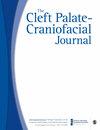Sotos综合征患者严重缺牙和上颌第二磨牙受累的正畸治疗。
IF 1.1
4区 医学
Q2 Dentistry
Cleft Palate-Craniofacial Journal
Pub Date : 2025-01-01
Epub Date: 2023-09-21
DOI:10.1177/10556656231201834
引用次数: 0
摘要
Sotos综合征是一种遗传性疾病,其特征是具有明显的颅面特征、儿童期生长过度和智力发育受损。我们在此报告了一例由NSD1基因杂合突变引起的14岁男孩Sotos综合征的成功正畸治疗。他表现出严重的缺牙、上颌第二磨牙嵌塞和骨骼III级颌基关系。正畸管理,包括通过上颌第一磨牙的牵引和阻生磨牙的牵引来控制空间,使用固定矫治器和迷你螺钉进行。结果,在保留18个月后,获得了可接受的闭塞,没有任何明显的复发。本文章由计算机程序翻译,如有差异,请以英文原文为准。
Orthodontic Management of Severe Hypodontia and Impacted Maxillary Second Molars in a Patient with Sotos Syndrome.
Sotos syndrome is a genetic disorder characterized by distinct craniofacial features, overgrowth in childhood, and impaired intellectual development. We herein report the successful orthodontic treatment of a 14-year-old boy with Sotos syndrome caused by a heterozygous mutation in the NSD1 gene. He showed severe hypodontia, impaction of the maxillary second molars and a skeletal Class III jaw-base relationship. Orthodontic management, including space control by protraction of the maxillary first molars and traction of the impacted molars, was performed using fixed appliances and miniscrews. As a result, acceptable occlusion was obtained without any discernible relapse 18 months postretention.
求助全文
通过发布文献求助,成功后即可免费获取论文全文。
去求助
来源期刊

Cleft Palate-Craniofacial Journal
DENTISTRY, ORAL SURGERY & MEDICINE-SURGERY
CiteScore
2.20
自引率
36.40%
发文量
0
审稿时长
4-8 weeks
期刊介绍:
The Cleft Palate-Craniofacial Journal (CPCJ) is the premiere peer-reviewed, interdisciplinary, international journal dedicated to current research on etiology, prevention, diagnosis, and treatment in all areas pertaining to craniofacial anomalies. CPCJ reports on basic science and clinical research aimed at better elucidating the pathogenesis, pathology, and optimal methods of treatment of cleft and craniofacial anomalies. The journal strives to foster communication and cooperation among professionals from all specialties.
 求助内容:
求助内容: 应助结果提醒方式:
应助结果提醒方式:


